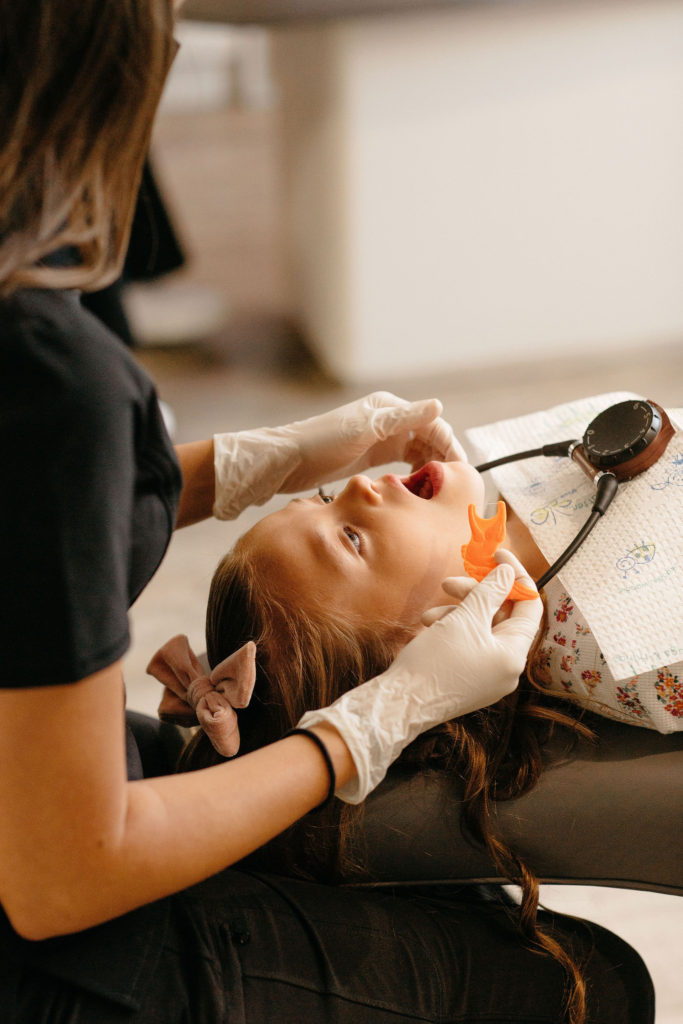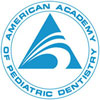Extraction
Extractions for Kids
A fun part of watching your child grow is the right of passage of losing a tooth. Your child noticing a tooth is loose and playing with it and tugging on it and making the tooth loose enough to pull is all a natural part of growth and development. There are times however, when a tooth needs to come out and needs help doing it. Tooth extraction in children can be done safely and painlessly by our pediatric dentists here at South Davis Pediatric Dentistry.

How Long Does It Take to Get a Tooth Pulled?
The length of time it takes for getting a tooth pulled depends a lot on the status of the tooth in question and what type of extraction is required. Pulling baby teeth that are in the front of the mouth is usually a simpler procedure because those front teeth have only a single straight root. Whereas a molar removal could be more involved and therefore take longer because it has more roots.

Will it hurt?
For simple extractions, local anesthesia is usually all that’s needed to keep your child comfortable and pain-free during the procedure. However, for surgical extractions, we may recommend in-office sedation options such as oral sedatives, nitrous oxide (laughing gas), IV sedation (conscious or unconscious), or a combination—depending on your child’s needs. Our priority is to ensure the experience is gentle, painless, and free from fear.
We’ll review all sedation options with you and your child (when age-appropriate) beforehand. In some cases, even for simple extractions, local anesthesia alone might not be sufficient—especially for younger children or those who may have difficulty sitting still. Rest assured, our team specializes in pediatric dentistry and has safely performed over 25,000 in-office sedations. We always take your child’s developmental stage, comfort level, and any dental anxieties into careful consideration when creating a treatment plan.
How Long Does It Take for a Tooth Removal to Heal?
Pain typically eases within the first day or two after a tooth extraction, but healing continues well beyond that. One of the most important parts of recovery is allowing the blood clot that forms in the tooth socket to remain undisturbed—it’s essential for proper healing. To help protect the clot and promote smooth healing, we recommend the following:
- Stick to soft foods for the first few days
- Avoid hard or crunchy foods for at least a week
- Encourage rest and relaxation for the first 24 hours
- Keep your child’s head slightly elevated when lying down (use one or two pillows)
- Avoid rinsing the mouth for the first 24 hours
- Continue brushing and flossing, but steer clear of the extraction site
- No drinking through a straw for the first 24 hours
If you’re ever unsure or have concerns, don’t hesitate to call us! We’re here to support you and your child every step of the way. For more information about sedation, feel free to visit our in-office sedation page.
When is a Tooth Extraction Necessary?
In pediatric dentistry, we generally aim to preserve your child’s primary (baby) teeth whenever possible. These teeth play an important role in maintaining the proper spacing in the jaw for when permanent molars and other adult teeth come in. However, there are some situations where a tooth extraction becomes necessary. These typically fall into one of three categories:
- Extensive decay or damage: If a tooth is too severely decayed or damaged and cannot be effectively repaired or restored, extraction may be the best option.
- Delayed natural loss: While we usually want baby teeth to stay in place until they fall out naturally, sometimes a primary tooth doesn’t come out on its own and starts to block the eruption of a permanent tooth.
- Orthodontic planning: If your child is a candidate for braces, removing one or more teeth may be necessary to help create the space needed for proper alignment.
In each case, our team will carefully evaluate your child’s needs and walk you through the best treatment plan.
How do you prepare for extracting a tooth?
We begin the extraction process with a thorough visual examination of your child’s mouth and jaw. We’ll also take an X-ray to assess the roots of the affected tooth and the condition of the surrounding bone. This allows our dentists to anticipate any potential complications and determine the most appropriate type of extraction.
Before proceeding, we’ll have a detailed conversation with you and your child about any medications (prescription or over-the-counter), supplements, or vitamins they may be taking. It’s also important for us to be aware of any medical conditions or past and upcoming surgeries that could impact the procedure.
There are two main types of tooth extractions we perform:
Simple Extraction
For a straightforward removal, we use a local anesthetic to completely numb the tooth, surrounding gum, and nearby bone, ensuring a pain-free experience. Using specialized tools, we gently rock and rotate the tooth to loosen it from the ligaments that anchor it to the jawbone. Once those ligaments are detached, the tooth can be easily removed.
Surgical Extraction
If the tooth is not easily accessible or is firmly anchored in place, a surgical extraction may be required. This involves making a small incision into the gum and, in some cases, removing a portion of the surrounding bone. Occasionally, the tooth may need to be sectioned and removed in pieces for a safe and effective extraction.
Our priority is always your child’s comfort and safety throughout the process.

How Long Does a Tooth Extraction Hurt?
After a tooth is extracted, it’s completely normal for some bleeding to occur. In certain cases, we may place a few stitches to support the healing of the socket. Once the tooth is removed, a blood clot will form in the empty space—this clot is essential, as it acts as a natural barrier to protect the area during the healing process.
For any discomfort following the procedure, most children find relief with over-the-counter pain medications such as Tylenol or ibuprofen. To help reduce swelling and ease pain, you can also apply a cold pack to the outside of the jaw at regular intervals during the first day or two.
Dentists on Our Team
Years Combined Experience
In-house Sedations
Patients
Counties Served
Staff members
Don't Wait Any Longer!
Schedule Your Child's Appointment Today








